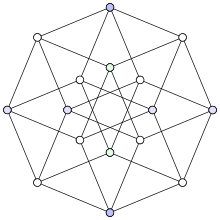
In mathematics, particularly in algebraic topology, the n-skeleton of a topological space X presented as a simplicial complex (resp. CW complex) refers to the subspace Xn that is the union of the simplices of X (resp. cells of X) of dimensions m ≤ n. In other words, given an inductive definition of a complex, the n-skeleton is obtained by stopping at the n-th step.
These subspaces increase with n. The 0-skeleton is a discrete space, and the 1-skeleton a topological graph. The skeletons of a space are used in obstruction theory, to construct spectral sequences by means of filtrations, and generally to make inductive arguments. They are particularly important when X has infinite dimension, in the sense that the Xn do not become constant as n → ∞.